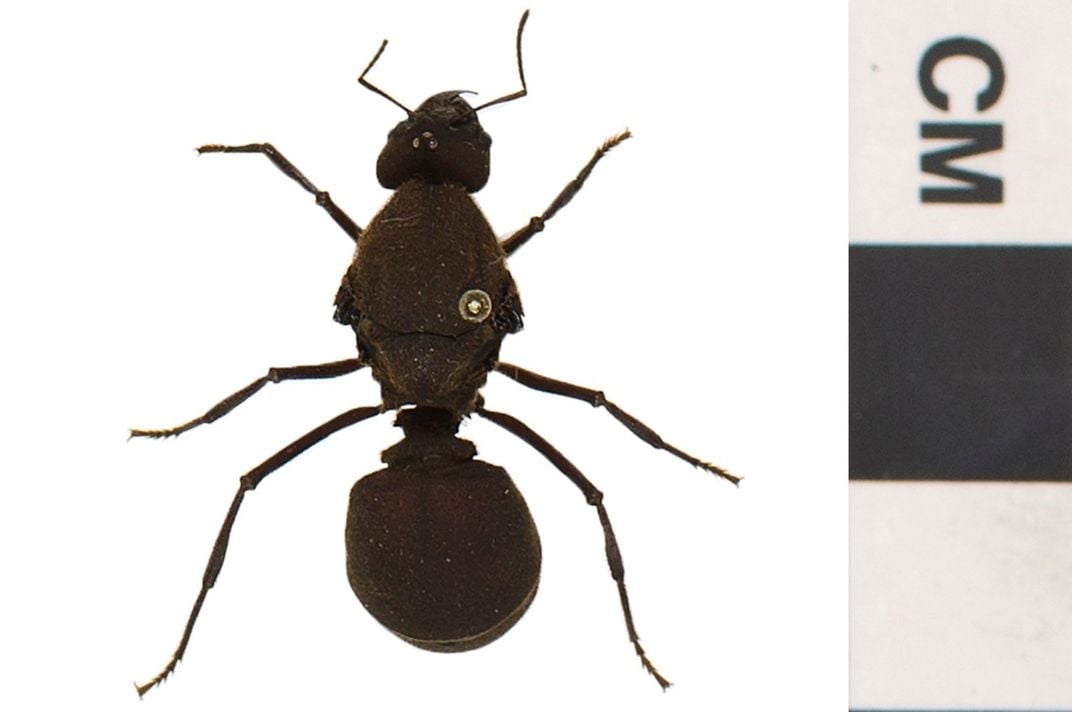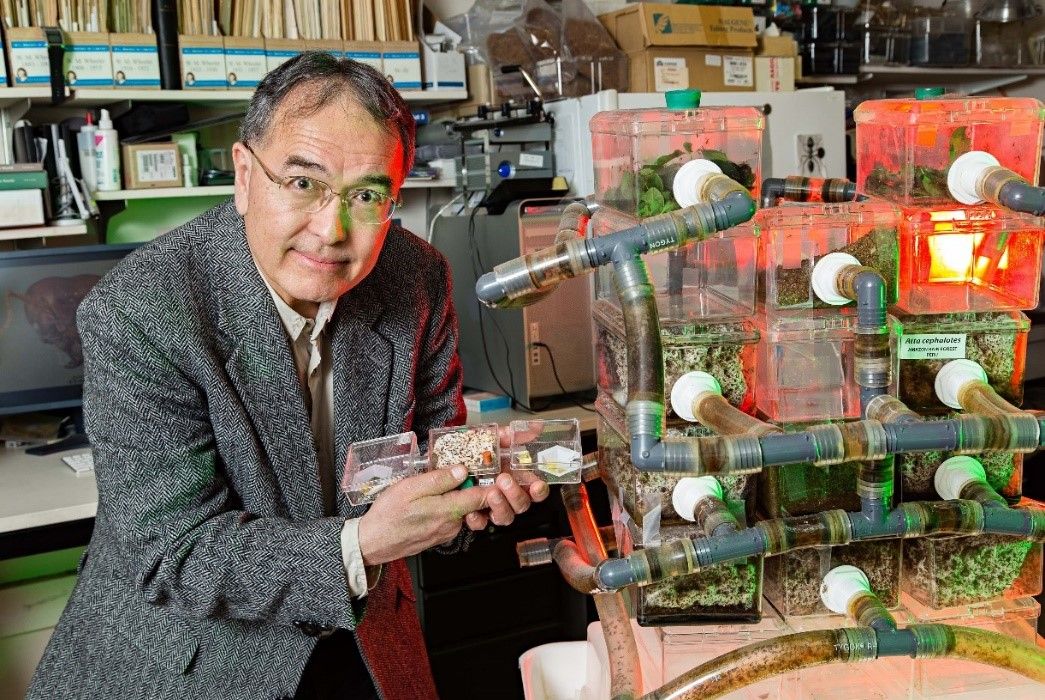NATIONAL MUSEUM OF NATURAL HISTORY
How Fungus-Farming Ants Fertilize Climate Research
Research on deeply connected insect species is illuminating how interspecies relationships might evolve in response to climate change
/https://tf-cmsv2-smithsonianmag-media.s3.amazonaws.com/blogging/featured/Two_ants_chewing_on_a_green_leaf.jpg)
Contrary to popular opinion, humans were not the Earth’s first farmers. That title belongs to fungus-farming ants, who started growing their own food over 50 million years ago. But these insects are more than agricultural experts. Through their complex societies, they have mastered the art of manipulating the neighboring plants and insects to suit their needs. Now, climate change is impacting those neighbors and changing the ants’ relationship with their surroundings.
“They have intricate relationships with everything around them,” said Ted Schultz, a research entomologist and curator of Hymenoptera at the Smithsonian National Museum of Natural History. “Those relationships make them sensitive to climate change because as the fungi, plants and insects in their environment are affected, so are the ants.”
By studying the museum’s collection of living and preserved fungus-farming ants, Schultz and his colleagues are digging up the history of these coevolutionary relationships. Their work on deeply connected insect species is illuminating how interspecies relationships in general might evolve in the future.
“These ants are one of the wonders of nature,” said Schultz.
Nature’s three-way partnership
Fungus-farming ants grow gardens of fungi on an industrial scale in their labyrinthine underground tunnels. Like every diligent horticulturist, they plant their fungi in rich soil, weed and apply pesticide in the form of antibiotic-producing bacteria.

But being such savvy farmers has led to an unshakable dependency on one another. The domesticated fungus no longer exists in the wild and cannot survive without the ants. Meanwhile, the ants have become so dependent on the fungus that they have lost genes that once helped them acquire nutrients elsewhere.
“The ants are unable to live without their gardens to the point where when a daughter queen leaves to start her own colony, she takes a part of the garden with her,” Schultz said.
For some fungus-farming ants, like leafcutters, the partnership is split three-ways. Leafcutter ants cut and chew leaves to feed the fungus that sustains them, causing nearby plants to develop defenses that prevent the ants from destroying their foliage. This web of interconnected species creates a stable system inside the larger ecosystem. But when external forces, like climate change, disrupt one species, the others are affected too.
But studying the impact of those changes is only possible through the museum’s living collection of fungus-farming ants.
A f-ant-astic resource
Preserved ants can reveal secrets about morphology and a species’ evolution over time. But they can’t teach researchers about their behavior and interactions with the environment. So, Schultz keeps multiple colonies of live fungus-farming ants in his lab.

By observing how the ants behave and collecting DNA from colonies and the fungi they grow, Schultz can build an evolutionary tree for the ants and study how their fungi became domesticated.
“In combining the ant and fungal data, we can reconstruct their coevolution, pinpoint when this domestication happened and figure out what events in Earth’s history may have driven it,” Schultz said.
Ant-agonizing the balance
Learning more about how fungus-farming ants interact with their ecosystems will help researchers study how climate change is affecting the ants’ relationships. It provides a baseline to better see how their relationships are shifting.
For example, scientists have already observed that rising global temperatures and the loss of local plants is pushing leafcutter ants into new areas, causing the ants to become an invasive species. Their expanding habitat isn’t bad for the ants, but it is damaging for native plants. The plants don’t have a way to defend against leafcutter ants, so their foliage is devastated easily.
Schultz’s research with fungus-farming ants emphasizes that, without mitigation efforts, our rapidly changing climate will damage millions of years of intricate coevolution.
“We have to ask ourselves what kind of world we want. If we want a world with all sorts of species, we need to preserve current conditions as much as possible,” Schultz said. “We need to maintain existing habitats where things have evolved over millions of years into a balanced and stable state.”
The Evolving Climate series continues May 20 when we’ll show you how researchers in the museum’s Department of Invertebrate Zoology are using environmental DNA samples to study how climate change is affecting corals.
Evolving Climate: The Smithsonian is so much more than its world-renowned exhibits and artifacts. It is an organization dedicated to understanding how the past informs the present and future. Once a week, we will show you how the National Museum of Natural History’s seven scientific research departments take lessons from past climate change and apply them to the 21st century and beyond.
Related Stories:
What Fossil Plants Reveal About Climate Change
Why Plants are Seeding Climate Studies
How Biominerals are Stepping Stones for Climate Change Research
Say Hello to the Scientist Caring for Smithsonian’s 35 Million Entomology Specimens
Get to Know the Scientist in Charge of Smithsonian’s 1.9 Million Mosquitoes

